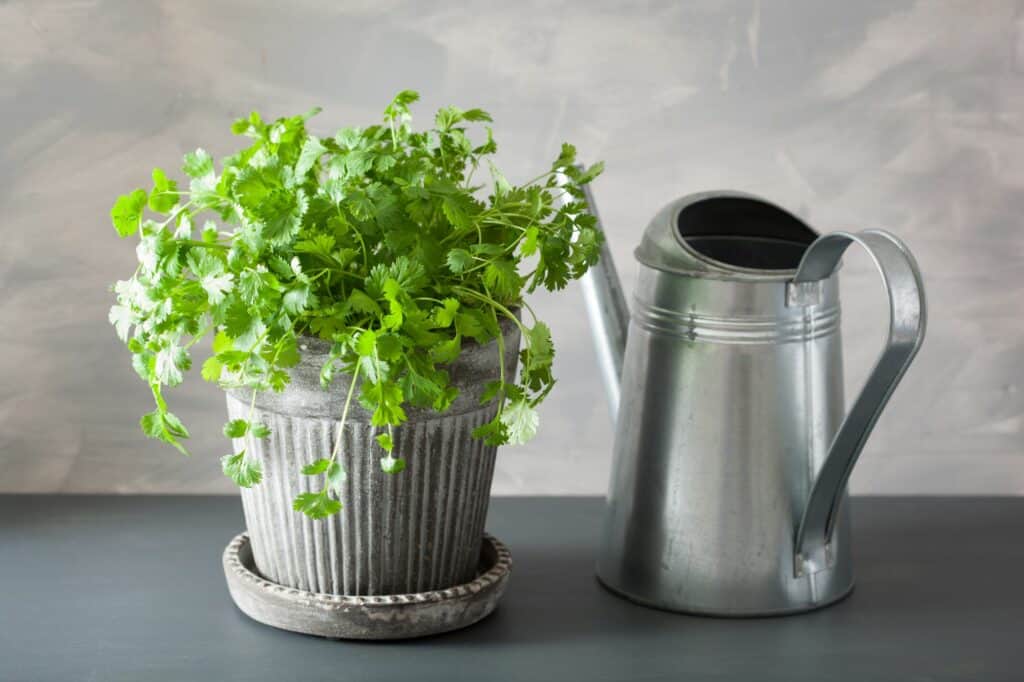Cilantro is a popular herb used in many dishes, and it’s easy to grow in your garden or even indoors. However, one of the most common questions people have when they start growing cilantro is how often they should water it.
The answer to this question depends on several factors, including the growing conditions, the size of the plant, and the weather.
Understanding cilantro and its growing conditions is essential to know how often to water it. Cilantro is a cool-weather herb that prefers well-draining soil and partial shade.
It can tolerate some drought, but it needs consistent moisture to thrive. Overwatering cilantro can lead to root rot and other problems, so it’s important to find the right balance.
Key Takeaways
- Cilantro is a cool-weather herb that prefers well-draining soil and partial shade.
- Overwatering cilantro can lead to root rot and other problems, so it’s important to find the right balance.
- The best way to determine how often to water your cilantro plant is to check the top half-inch of soil for dampness.
Don’t miss more content about Cilantro plant!
Cilantro Plant Turning Yellow – 5 Causes, Solutions & Best Growing Tips
Cilantro Plant Dying – 5 Signs, Solutions & Best Growing Tips
Cilantro Leaves Turning Yellow: 4 Causes, Solutions & Best Care Tips
How to Pick Cilantro Without Killing Plant? 4 Quick Steps!
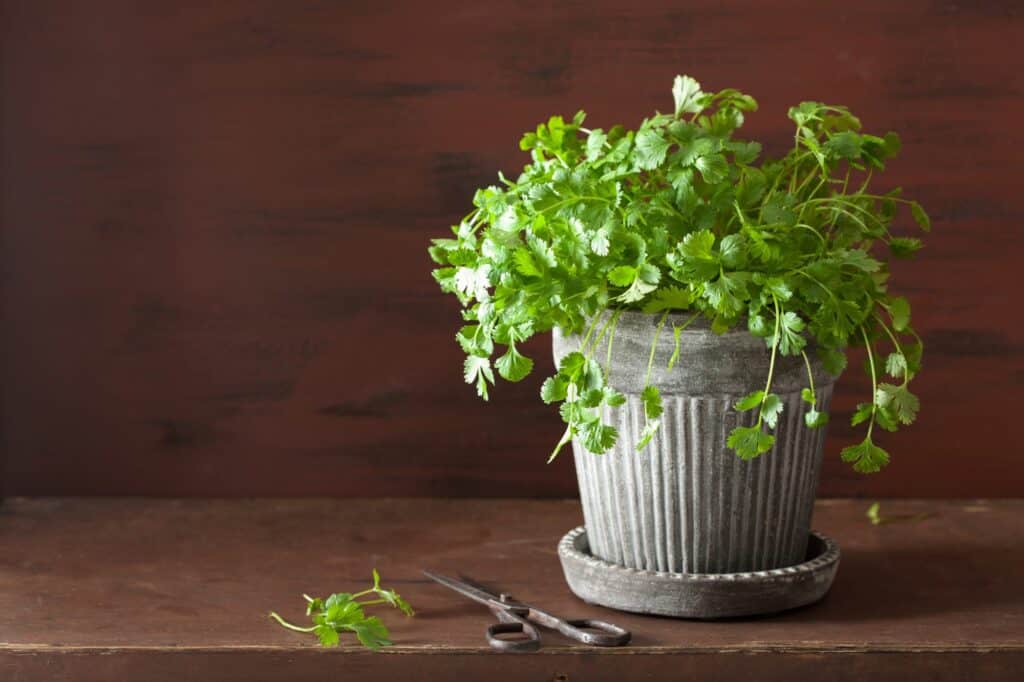
Understanding Cilantro
Cilantro is a popular herb used in many cuisines around the world. It is known for its unique flavor and aroma, which can be described as citrusy, slightly sweet, and pungent.
Understanding cilantro is important for anyone who wants to grow this herb in their garden or use it in their cooking.
Cilantro Vs Coriander
Cilantro and coriander come from the same plant, but they are different in terms of their appearance, flavor, and usage.
Cilantro refers to the leaves of the coriander plant, while coriander refers to the seeds. The leaves and seeds have different flavors and are used in different ways.
Cilantro leaves are commonly used fresh in salads, salsas, and other dishes. They have a bright, citrusy flavor that adds a refreshing touch to any dish.
Coriander seeds, on the other hand, are used as a spice in many cuisines. They have a warm, earthy flavor that is often used in curries, soups, and stews.
Cilantro Varieties
There are several varieties of cilantro, each with its own unique characteristics. Some of the most popular varieties include:
- Slow-bolt cilantro: This variety is slow to bolt, meaning it takes longer to produce flowers and go to seed. This makes it ideal for growing in hot climates where cilantro tends to bolt quickly.
- Santo cilantro: This variety is known for its large, flavorful leaves and strong aroma. It is a popular choice for Mexican and Asian cuisine.
- Leisure cilantro: This variety is easy to grow and produces a high yield of flavorful leaves. It is a good choice for beginners or anyone looking for a low-maintenance herb.
Understanding the differences between cilantro and coriander, as well as the various cilantro varieties, can help you choose the right herb for your needs.
Whether you are growing cilantro in your garden or using it in your cooking, knowing more about this versatile herb can help you get the most out of it.
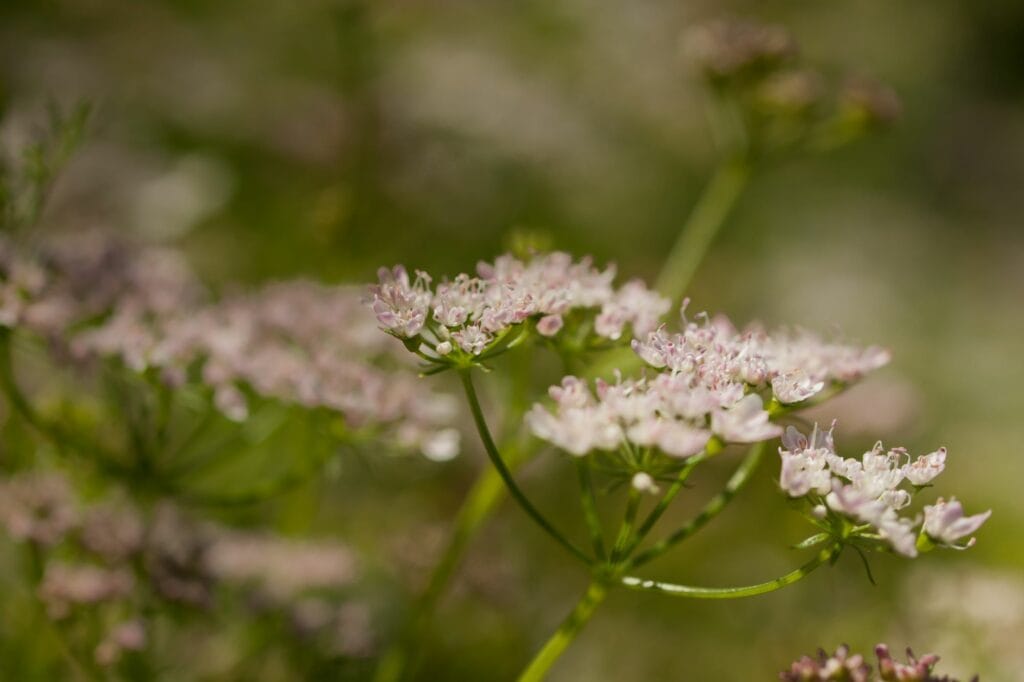
Growing Conditions for Cilantro
Cilantro (Coriandrum sativum) is a popular herb that is easy to grow and adds a distinct flavor to dishes.
However, it requires specific growing conditions to thrive. In this section, we will discuss the ideal temperature, sunlight requirements, and soil preferences for growing cilantro.
Ideal Temperature
Cilantro prefers cool temperatures and can be grown in both spring and fall. The ideal temperature range for growing cilantro is between 50°F and 85°F (10°C and 29°C).
Cilantro can tolerate light frost, but it does not do well in extreme heat. If the temperature is too hot, cilantro will bolt and go to seed quickly.
Sunlight Requirements
Cilantro requires full sun to partial shade. It needs at least 4-6 hours of direct sunlight per day to grow properly. However, in hot climates, it is best to provide some shade during the hottest part of the day.
Soil Preferences
Cilantro prefers well-drained soil with a pH between 6.2 and 6.8. It does not do well in heavy clay soil or soil that is too acidic. Cilantro grows best in loose, fertile soil with plenty of organic matter. If you are planting cilantro in a container, use a good quality potting soil.
Cilantro requires cool temperatures, full sun to partial shade, and well-drained soil with a pH between 6.2 and 6.8. With the right growing conditions, cilantro can be a flavorful and easy-to-grow herb for any home gardener.
Planting Cilantro
Cilantro is a popular herb used in many dishes, and it is easy to grow at home. Proper planting is essential for a successful cilantro harvest.
This section will cover the basics of planting cilantro, including planting from seed to seedling and indoor vs outdoor planting.
From Seed to Seedling
Cilantro can be grown from seed or seedlings. If starting from seed, sow them directly into the soil in the spring or fall.
Cilantro seeds take about 7-10 days to germinate, and the seedlings will appear in about 2-3 weeks. When the seedlings are about 2 inches tall, thin them out to about 6 inches apart.
If starting from seedlings, purchase them from a nursery or garden center. Transplant them into the soil after the last frost date in the spring or in the fall. Make sure to space the seedlings about 6 inches apart.
Indoor Vs Outdoor Planting
Cilantro can be grown indoors or outdoors, depending on the climate and growing conditions. Indoor cilantro can be grown year-round in a sunny window or under grow lights.
Use a well-draining potting mix and make sure the pot has drainage holes. Water the cilantro when the top inch of soil is dry.
Outdoor cilantro prefers full sun to partial shade and well-draining soil. It can be grown in raised beds or in the ground. Make sure to space the plants about 6 inches apart. Water the cilantro when the top half-inch of soil is dry.
Cilantro is an easy herb to grow, and proper planting is essential for a successful harvest. Whether planting from seed or seedling, indoor or outdoor, make sure to provide the right growing conditions for your cilantro plant.
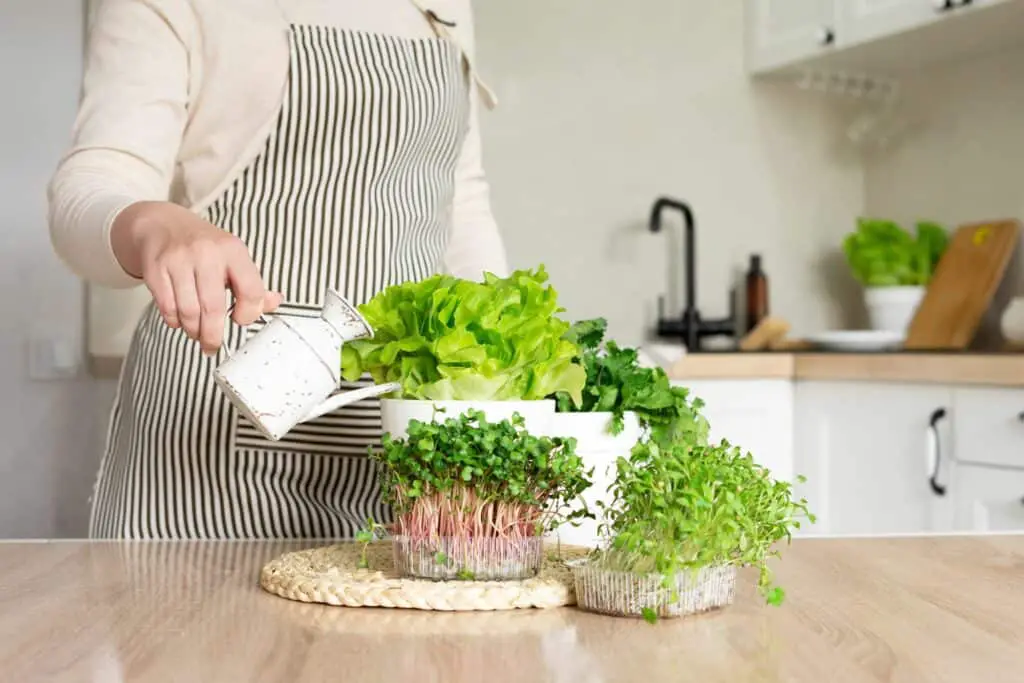
Watering Cilantro
Cilantro is a delicate herb that needs proper watering to thrive. Overwatering can cause root rot, while underwatering can lead to wilting and stunted growth.
This section will cover how much water cilantro needs, when to water it, and how to identify signs of overwatering and underwatering.
How Much Water
Cilantro prefers moist soil, but not waterlogged soil. As a general rule of thumb, cilantro plants need to be watered every 1-3 days, depending on the weather conditions. If the weather is particularly hot or dry, the plants may need to be watered more frequently.
On the other hand, if it has been raining quite a bit, the plants may be able to get away with less frequent watering.
To determine if the plants need water, check the top half-inch of soil for dampness. If it is dry, it is time to water the plants. If it is still damp or moist, then it is not necessary to water them.
It is important to note that cilantro plants in containers may dry out faster than those planted in the ground, and may require more frequent watering.
When to Water
The best time of day to water cilantro is early morning or late evening when temperatures are cooler and humidity levels are lower.
This helps prevent fungal diseases from developing on the leaves as well as prevent them from wilting during warm weather months when temperatures rise.
Signs of Overwatering
Overwatering can cause root rot, which can be fatal to cilantro plants. Signs of overwatering include yellowing leaves, mushy stems, and a foul odor.
If overwatering is suspected, reduce the frequency of watering and allow the soil to dry out before watering again.
Signs of Underwatering
Underwatering can lead to wilting and stunted growth. Signs of underwatering include dry and brittle leaves, curled leaves, and slow growth.
If underwatering is suspected, increase the frequency of watering and ensure that the soil is moist but not waterlogged.
Proper watering is crucial for the health and growth of cilantro plants. By following these guidelines, gardeners can ensure that their cilantro plants receive the right amount of water at the right time.
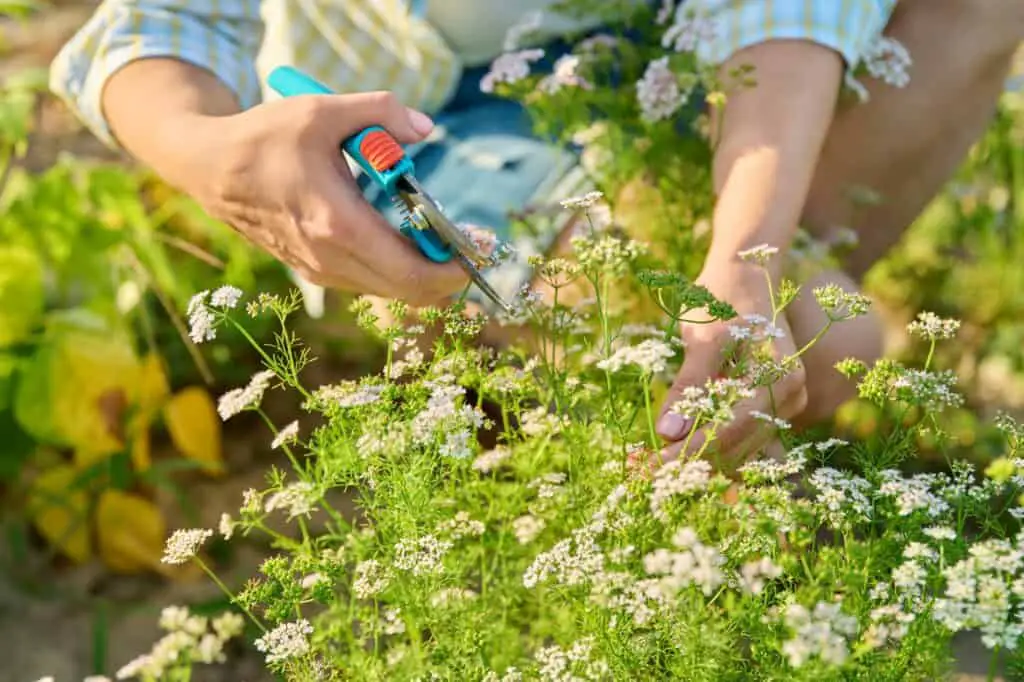
Caring for Your Cilantro Plant
Cilantro is an herb that is easy to grow, but it does require some care to thrive. One of the most important aspects of caring for your cilantro plant is proper watering.
Overwatering can cause the roots to rot, while underwatering can cause the plant to wilt. Here are some tips for caring for your cilantro plant.
Using Fertilizer
Cilantro plants need nitrogen to grow, so it is important to fertilize them regularly. A balanced fertilizer with equal amounts of nitrogen, phosphorus, and potassium is ideal.
Fertilize your cilantro plant every two to three weeks during the growing season, and stop fertilizing once the plant starts to flower.
Preventing and Treating Diseases
Cilantro plants are susceptible to a few diseases, including wilt and leaf spot. To prevent these diseases, make sure to plant your cilantro in well-draining soil and avoid overwatering.
If you notice any signs of disease, such as yellowing leaves or spots on the leaves, remove the affected leaves and treat the plant with a fungicide.
Dealing with Pests
Aphids are a common pest that can attack cilantro plants. To prevent aphids, keep your cilantro plants healthy and well-watered. If you do notice aphids on your plants, you can try spraying them off with a strong stream of water or treating the plants with an insecticidal soap.
In addition to proper watering, caring for your cilantro plant also includes regular fertilization, disease prevention, and pest control. By following these tips, you can ensure that your cilantro plant stays healthy and produces plenty of flavorful leaves.
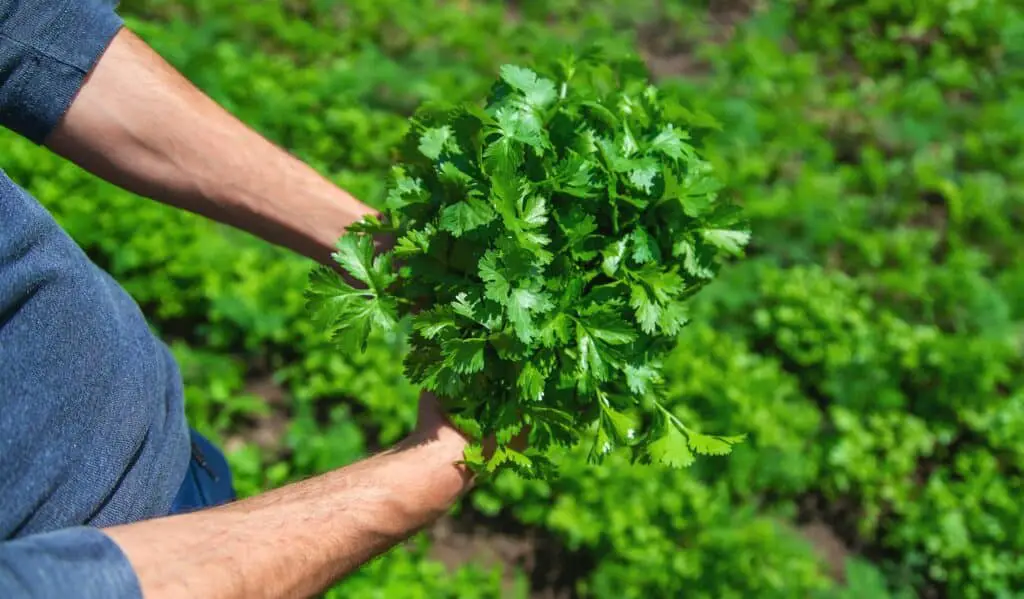
Harvesting and Using Cilantro
When and How to Harvest
Cilantro is a popular herb that is used in many different types of cuisines, including Indian and Mexican. When growing cilantro, it’s important to know when and how to harvest it to get the best flavor.
According to Gardening Know How, cilantro should be harvested about once a week. If the plant is growing well, you can harvest more often. Either way, you’ll need to harvest the cilantro at least once a week to help stave off bolting.
When harvesting cilantro, you can either pick leaves one by one or cut stems 4 to 6 inches long. If you want to leave the plant to continue to grow, cut exterior leaves and use them as you need them.
Your cilantro will continue to grow for at least a few weeks, producing more leaves. If you’re harvesting individual leaves, pick them from the top of the plant.
Culinary Uses of Cilantro
Cilantro is a versatile herb that can be used in many different dishes. It has a fresh, citrusy taste that pairs well with spicy or savory flavors.
One popular use of cilantro is in salsa. Cilantro adds a bright, fresh flavor to salsa that complements the heat of the peppers. It’s also commonly used in guacamole, where it adds a pop of color and flavor.
In Indian cuisine, cilantro is often used in chutneys and curries. It pairs well with cumin, coriander seeds, and other spices commonly used in Indian cooking.
Cilantro can also be used as a garnish for soups, salads, and tacos. It adds a pop of color and a fresh flavor to any dish.
Cilantro is a versatile herb that can be used in many different types of dishes. When growing cilantro, it’s important to know how to harvest it to get the best flavor.
Frequently Asked Questions
How much sunlight does cilantro need?
Cilantro plants need at least 6 hours of direct sunlight each day. They grow best in a spot with full sun, but they can also thrive in partial shade. If you’re growing cilantro indoors, place it near a south-facing window or under grow lights for at least 6 hours per day.
How often to water parsley?
Parsley plants prefer moist soil, but they don’t like to be overwatered. As a general rule of thumb, water parsley plants deeply once a week, making sure the soil is evenly moist. If the weather is particularly hot or dry, you may need to water more frequently.
How often should I water oregano?
Oregano is a drought-tolerant plant and doesn’t need as much water as other herbs. As a general rule of thumb, water oregano plants deeply once a week, making sure the soil is evenly moist. If the weather is particularly hot or dry, you may need to water more frequently.
How often to water dill?
Dill plants prefer moist soil, but they don’t like to be overwatered. As a general rule of thumb, water dill plants deeply once a week, making sure the soil is evenly moist. If the weather is particularly hot or dry, you may need to water more frequently.
How often should I water rosemary?
Rosemary is a drought-tolerant plant and doesn’t need as much water as other herbs. As a general rule of thumb, water rosemary plants deeply once a week, making sure the soil is evenly moist. If the weather is particularly hot or dry, you may need to water more frequently.
How often to water chives?
Chives prefer moist soil, but they don’t like to be overwatered. As a general rule of thumb, water chive plants deeply once a week, making sure the soil is evenly moist. If the weather is particularly hot or dry, you may need to water more frequently.

Hey, I’m Lisa and I’ve been an avid gardener for over 30 years. I love writing, talking and living in the garden! Feel free to connect with me on my socials below

